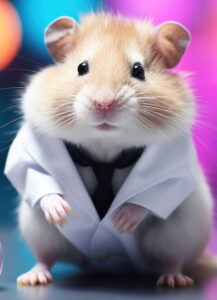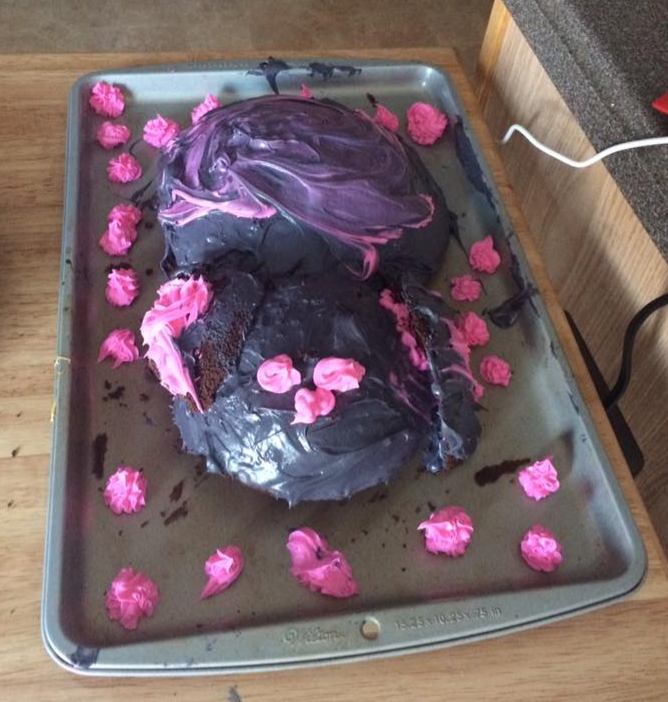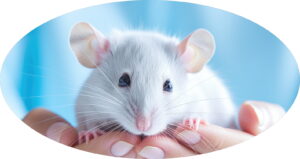“Lab rats make great pets.”
That’s the proclamation of an animal care official at University of Auckland, in a June 17 Cosmos Magazine article focusing on a New Zealand program with the laudable goal of “re-homing” retired laboratory rats (that is, placing them as pets in caring homes).
Having befriended quite a few lab rats in my younger days, I’m 100% behind this initiative, although in reading the article I can’t help but think, Wow. Has the experience of our discipline been forgotten so thoroughly that this counts as news?
Apparently. For evidence, check out a brief history of the lab rat (including links to two documentary videos) in Smithsonian Magazine. This is an informative, entertaining, and thoughtful read, but its focus is biomedical, and it all but ignores behavioral research and the many positive developments that trace to it (you’ll find only a vague reference to studies involving electric shocks; ugh).
We Were There First
So, to partially even the score, here’s a bit of history that will be familiar to readers of this column. Time was when animal research was the bedrock of behavioral psychology, and our research was known to pretty much everyone with two firing neurons. For example:
- A senior colleague of mine who’s far, far, far from being a behaviorist credited Schedules of Reinforcement as one of the great scientific achievements of the 20th Century for revealing replicable order in behavior-environment relations at many scales of analysis.
- The American Psychological Association used to require all clinical psychology trainees to take a graduate course on learning, which usually included a healthy dose of basic operant research.
- And, of course, operant research with animals left a prominent imprint on popular culture, including in the form of a famous cartoon that gets the gist of operant learning more or less right (we’ll conveniently ignore less savory impacts, such as gross misinterpretations that equated operant learning with brainwashing).

Because behavioral psychology once held a rather prominent place in Psychology and in society, not so long ago Psychology students at many universities took a lab course in which they applied principles of operant learning, often with rats. Indeed, one of my best professional experiences during graduate training at West Virginia University was teaching the undergraduate rat lab that Andy Lattal designed. As a learning experience for students, there is simply no substitute for creating real-time behavior change in a living organism, and no other course with which I’ve been associated in almost 40 years of teaching has produced the same level of student engagement.
Now, anyone who’s taught a lab class knows that students, including many for whom rats initially score high on the Ick Scale, tend to become enamored of their rats. In fact, it used to be common practice at a lot of universities to allow students, once the rat-lab semester ended, to adopt their subjects. The result included a lot of fruitful interspecies friendships and, I presume — since the alternative typically was euthanasia (of rats, not students) — a hefty dose of rat-gratitude.
None of the above is mentioned in the Cosmos article. There are lots of possible reasons why our discipline’s history may be forgotten, but the part where students got to keep their lab rats faded from memory in part because research ethics committees got involved and decided that it was more “humane” to euthanize lab animals. In the US and a lot of other places, said adoptions were all but abandoned. For instance, WVU had already stopped sending rat-lab rats home by the time I started teaching the lab course, circa 1984.
Contemporary Re-Homing
Which brings us back to the Cosmos article. Each year across the world millions of rats and mice are specially bred for use in research. Most are euthanized once the research protocol concludes — in no small part because, as I mentioned, at one time animal-ethics red tape all but ended the adoption of research animals. Contemporary attitudes have shifted, however, as illustrated by this recent, detailed discussion of the ethics of re-homing (e.g., “We take it as a premise that prolonging a life worth living is a value that should be promoted for the sake of the animals. In addition, it makes us more virtuous and caring institutions and staff if we grant animals this opportunity.”)
Programs like the one in New Zealand aim to curtail the euthanasia of retired lab animals, and that’s a great goal but also a tall order. Currently fewer than 1% of New Zealand’s unneeded lab animals find homes outside of the laboratory; in the Netherlands, the figure approaches 3%. I’m not aware of data from other countries, but in the US, the good news is that, as stated in a 2019 policy document, the National Institutes of Health now
…Supports a research institution’s decision to adopt out their research animals (also called “rehoming”) following the completion of the NIH-supported research. This decision is up to the research institution, should they deem the animals appropriate for rehoming.
Let’s call that grudging support, however, because the NIH leaves re-homing decisions up to research institutions, rather than mandating and/or coordinating them directly. It adds that, “These programs require time, monetary resources, staffing, and expertise,” while, informatively, forbidding the use of NIH resources to facilitate re-homing. So, in effect, they’re saying: Give the animals a good home if you want, but this comes out of YOUR pocket.
Funding for the New Zealand program apparently comes jointly from the University of Auckland and the New Zealand Anti-Vivisection Society. The program “vets adoptees, provides welcome packs and ferries the animals to their new homes.” That sounds like a pretty minimal investment of time and money, but honestly, in the US, my first thought was to be skeptical that cash starved US universities would be willing to do even this much. And, from what I can tell, a lot of US re-homing efforts are coordinated by private organizations.
A Success Story

But there are pleasant exceptions. For instance, since 2016, Millersville (PA) University has been re-homing the beasties from whom students learn in Advanced Lab in Learning and Behavior Analysis, which is taught by Associate Professor Kelly Banna. Check out the write-up about these adoptions in Lancaster Online — it’s a rare public-media instance of behavior analysis being described simply, accurately, and positively.
Kelly says that the seeds of her commitment to re-homing were planted during a neuroscience postdoctoral fellowship, in which rat subjects were routinely euthanized when experiments ended. “I’m not morally opposed to animal research,” Kelly says, “but I love animals, and I decided I wasn’t going to spend the rest of my career putting down a new group of rats every three months.” She therefore decided she would need to avoid animal research moving forward.
But when the job at Millersville presented itself, it came with conundrum: a rat lab course!
During my interview with the department chair, she asked if I was interested in teaching that class and taking over the lab. I said that I would only do it under one condition—that I get to adopt the animals out at the end of the semester. I knew we would not be doing surgeries or using methods that would alter the rats permanently in a way that would require them to be euthanized, and I could not, in good conscience, kill one-to-two dozen perfectly healthy animals every year simply because that’s what is normally done. Without batting an eyelash, she said, “ok.”
Kelly then had to figure out the how-to, and ultimately modeled her process after a program at the University of Colorado at Denver. Yes, Millersville administrators and lawyers had to be involved, but in the end they were supportive.
Rats are social creatures, so at Millersville and elsewhere (like New Zealand) they are adopted out only in pairs. Kelly explains:
Anyone who wants to adopt a rat pair from us has to complete an application. I also do a veterinary/reference check. Mostly I just call their vet clinic and ask if there is any reason they would recommend that I not allow the applicant to adopt rats from us. So far, no one has said “no,” but you need to take selection bias into account. I make it clear in fliers, media, and on the application that I will be conducting a reference check, so anyone who is unlikely to pass it probably self-selects out of the pool. If the person doesn’t have a veterinarian (because they are a new pet owner or it’s been a very long time since they’ve owned a pet), I ask for a personal reference who is not a family member. Adopters also have to sign a waiver saying that they will provide vet care and avoid certain things (e.g., breeding, use of rats as religious objects [not kidding] or food sources), and the waiver relieves MU of any post-adoption obligations. Is it perfect? No, but I’ve been comfortable with all of the adopters we’ve had so far.
Kelly can be picky because gets far more applications than she has pairs to adopt out. Whenever possible, she chooses students she knows from her class, alumni, past adopters with a good track record, and people with professional experience relevant to animal welfare (“I also started a Facebook page for adopters with the intent of building a little community of adopters to whom I can turn in the future when I need good homes.”)
Humans Benefit

Kelly says that, like all good pets, adopted rats enhance the environment of those who adopt them. And, just as many people prefer to adopt cats and dogs from shelters, many of her applicants appreciate being able to adopt vs. purchasing from a breeder or pet store.
Anyone who’s worked with rats knows that they adapt quickly to human handling and, when well cared for, seem to enjoy human company. When I was in graduate school, this made it easy to retrieve our subjects from the vivarium — we’d simply put a hand in the home cage, and usually the resident rat would come right over to it (this wasn’t just food-deprived animals hurrying to the treats waiting in the operant chamber; the same happens with frequently handled free-feeding rats).
According to Jodi Salinsky, Animal Welfare Officer and Head Veterinarian at the University of Auckland, which coordinates the New Zealand re-homing project, rats are “hilarious”, “easy to train”, “social”, “snuggle bunnies” and — contrary to popular opinion — “not prone to biting.” Unsurprisingly, adopters often reach out to Kelly to express their gratitude (inset). “There is a very dedicated rat parent community out there,” says Kelly, “and they are INTENSE.”
Elze Strasky, who works with a re-homing program in the Netherlands, embodies this description. She has adopted five rats who’ve become a central part of her family.
The first thing my six- and eight-year-old daughters do when they get out of school is open the cage, ‘scoop up’ a rat and put it on their shoulder to play with in the room. There, the rats can roam freely and get crusts of bread and other tasty treats. Watching TV together is also a favourite. Then we all sit together on the couch over which we put some cloths beforehand. The rats walk on the couch until they are tired, and after a while they go to sleep. They do their needs neatly on [a] little rat toilet, a container with sawdust that we always put next to it.
Just as I was completing this post, a Millersville adopter, Natalie Marioni, reached out to Kelly with this testimonial (as a sign of her enthusiasm, when Kelly requested permission to reprint her comments, she asked to be identified by name):
I’m so glad to have adopted Cupcake and Spice. They have both increased my quality of life and brought me such joy. If you’d been around me at all since I adopted them last August, you would have heard me say that many times in different ways. I like to think that I have given them a great quality of life, but my heart knows how much each of my lab adopted rats (in college I’d adopted three former lab rats) has enriched my life. And they have all come into my life shortly before a time of some various mental health struggles… and when I’m spending time with them, some of those struggles fade away.
On a more personal note about the Millersville project, Kelly adds:
One of the primary benefits associated with adoption programs is to the emotional wellbeing of the people working in the lab. To be perfectly honest, I’m sure I benefit the most. I don’t have to keep the rat lab running—I could redesign the lab course I teach so that it’s all based on human research. By continuing the animal lab, I feel like the wellbeing of the animals we use is a direct function of the choices I make and, as I mentioned, I think killing perfectly health animals is unethical. I also think the animal lab provides invaluable experience for our undergrads. The adoption program therefore allows me to have my rat cake [inset, above] and eat it, too. Based on conversations with students, they are also completely disinterested in euthanizing the animals (or knowing that I am doing it), so their emotional wellbeing is also enhanced.
But the Real Point is the Rats
Of course, critiques of animal experimentation tend to reject the notion that the research can be justified solely based on the benefits to humans (they “should not be treated solely as instruments for the purposes of others“). From this perspective, human benefits of lab-animal re-homing also are beside the point — what matters is benefits to the rats. Here’s the basic ethical equation, according to an analysis by van Loo and Janssens (2023). It’s a given in contemporary society that animal research will be conducted, and that many subjects will outlive their roles in the lab. It’s also an historical reality that euthanasia has been considered the standard solution to this problem. Therefore:
Assuming that redundant laboratory animals will be killed in a relatively friendly way, without unnecessary fear or pain, it is important for our argument that continuing life has, in itself, a positive value for the animal. Or, in other words: is ending a life that could have continued as a good life a harm done to the animal?
Kelly obviously thinks this is the right question, stressing that
Of course, the rats benefit, too. Or I hope they do—it’s not like I can ask them (OK, I can ask them, but they’re not going to answer). When I hear from adopters, their verbal reports and associated pictures/videos all suggest that the rats are living their BEST lives in retirement.
Getting Started With Re-Homing
I was always ambivalent about euthanizing retired lab animals. On the one hand, It’s pretty hard to get to know a laboratory animal without appreciating the many reinforcers that flow from its existence. On the other hand, I understand the good intentions behind euthanasia. On the other-other hand, a blanket euthanasia policy never made much sense. It’s true that some animals emerge from experiments unsuited to any environment but the lab for which they were bred (e.g., they are infectious or surgically changed, and so forth). But others, like the “graduates” of most behavioral experiments, are pretty happy and healthy and may have a decent chunk of natural lifespan still ahead of them.
Let’s therefore hope that the re-homing movement continues to gain steam.
For those interested in rehoming programs in the US, the go-to starter resource is the Animal Welfare Act, the only federal legislation governing animal research (and of course you’ll need to work through your local Animal Care and Use Committee). About 1/4 of U.S. states have passed laws encouraging and supporting re-homing; you’ll want to see if yours is among them. You can and should check out policies and procedures at other institutions, and elsewhere in the world (e.g., Europe and New South Wales, Australia). By all means get advice from people like Kelly who are already re-homing.
Coming in Part 2: Risks Inherent in Re-Homing
I hope it’s obvious that I’m a fan of lab-animal adoptions — when done properly. But this is a two-sides coin, and in the second installment of this post, coming soon, I’ll discuss some of the risks that re-homing programs inttroduce and the ethical framework that must evaluate those risks.

